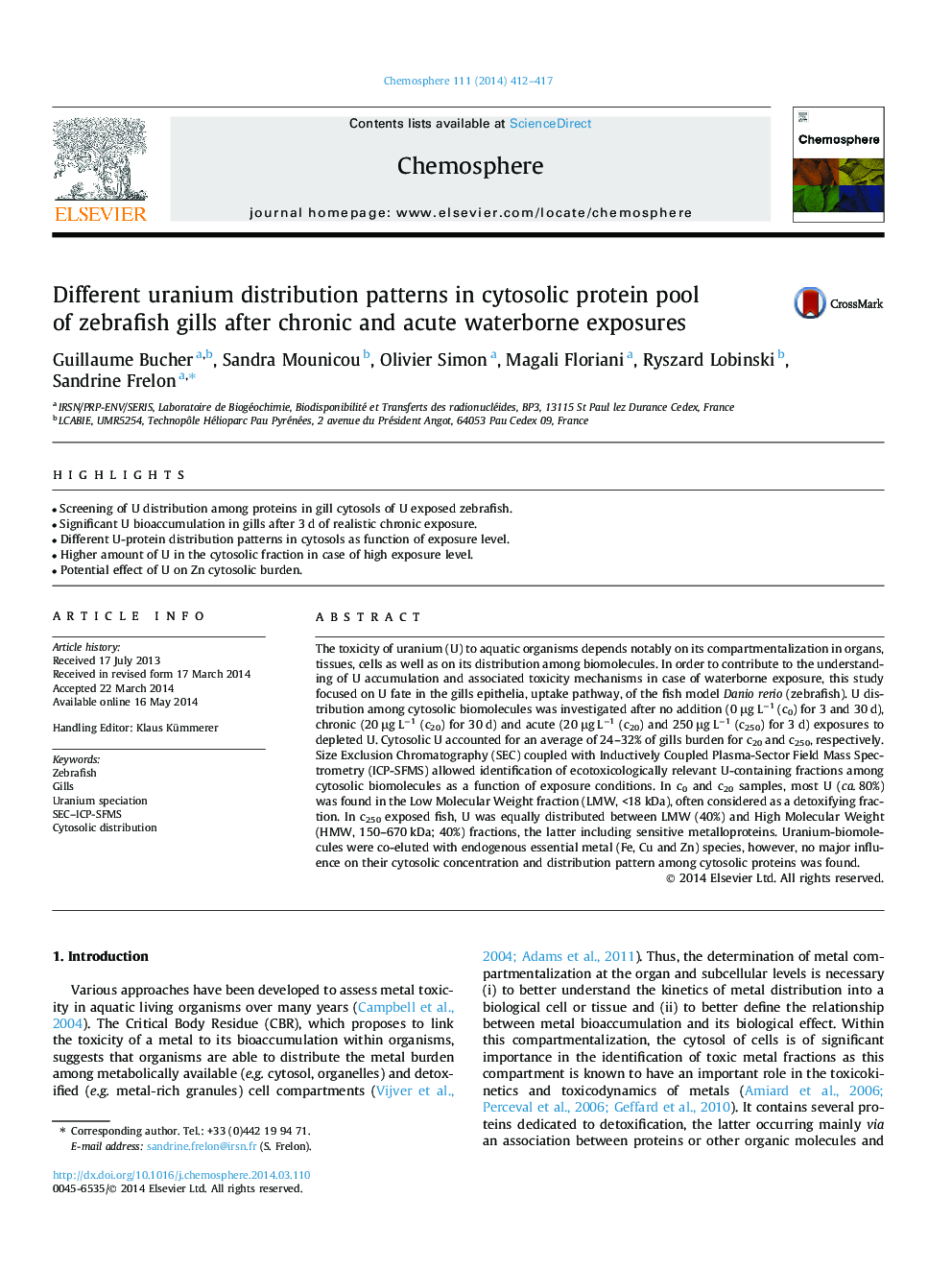| Article ID | Journal | Published Year | Pages | File Type |
|---|---|---|---|---|
| 6308708 | Chemosphere | 2014 | 6 Pages |
â¢Screening of U distribution among proteins in gill cytosols of U exposed zebrafish.â¢Significant U bioaccumulation in gills after 3 d of realistic chronic exposure.â¢Different U-protein distribution patterns in cytosols as function of exposure level.â¢Higher amount of U in the cytosolic fraction in case of high exposure level.â¢Potential effect of U on Zn cytosolic burden.
The toxicity of uranium (U) to aquatic organisms depends notably on its compartmentalization in organs, tissues, cells as well as on its distribution among biomolecules. In order to contribute to the understanding of U accumulation and associated toxicity mechanisms in case of waterborne exposure, this study focused on U fate in the gills epithelia, uptake pathway, of the fish model Danio rerio (zebrafish). U distribution among cytosolic biomolecules was investigated after no addition (0 μg Lâ1 (c0) for 3 and 30 d), chronic (20 μg Lâ1 (c20) for 30 d) and acute (20 μg Lâ1 (c20) and 250 μg Lâ1 (c250) for 3 d) exposures to depleted U. Cytosolic U accounted for an average of 24-32% of gills burden for c20 and c250, respectively. Size Exclusion Chromatography (SEC) coupled with Inductively Coupled Plasma-Sector Field Mass Spectrometry (ICP-SFMS) allowed identification of ecotoxicologically relevant U-containing fractions among cytosolic biomolecules as a function of exposure conditions. In c0 and c20 samples, most U (ca. 80%) was found in the Low Molecular Weight fraction (LMW, <18 kDa), often considered as a detoxifying fraction. In c250 exposed fish, U was equally distributed between LMW (40%) and High Molecular Weight (HMW, 150-670 kDa; 40%) fractions, the latter including sensitive metalloproteins. Uranium-biomolecules were co-eluted with endogenous essential metal (Fe, Cu and Zn) species, however, no major influence on their cytosolic concentration and distribution pattern among cytosolic proteins was found.
